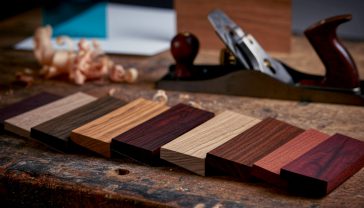From Fuchsias to Fig Trees: The Guide to Plants Starting with ‘F’
From the cheerful Fuchsia to the magnificent Fir tree, explore our definitive guide to 10 brilliant plants beginning with ‘F’ for a beautiful UK garden.
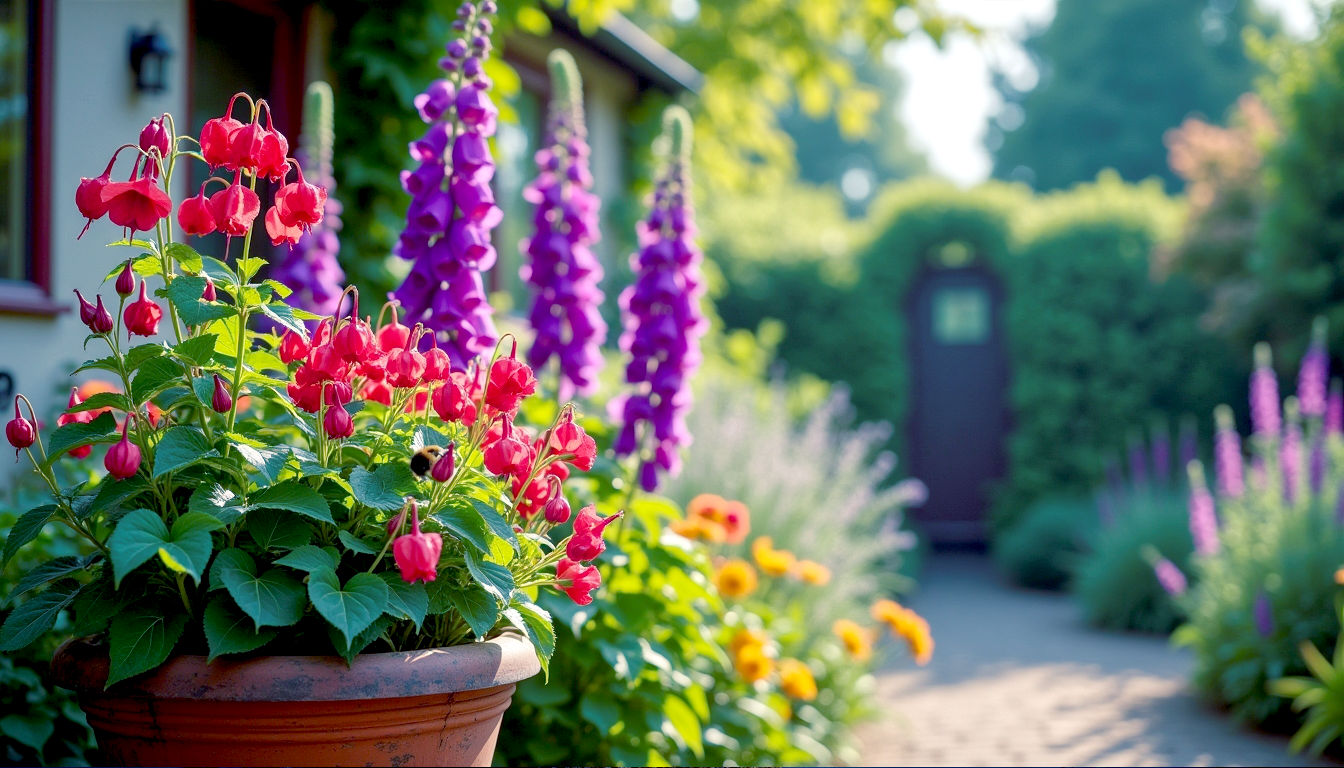
This post may contain affiliate links. If you make a purchase through these links, we may earn a commission at no additional cost to you.
Step into any British garden, from a sprawling country estate in the Cotswolds to a cheerful balcony in London, and you’ll find a story. It’s a tale told in petals, leaves, and branches—a living history of changing tastes, clever gardening, and plants that have made themselves right at home in our famously fickle climate. It’s a world where a splash of colour can brighten the greyest of days and where a bit of greenery connects us to the seasons.
But where do you start? The sheer choice can be mind-boggling. That’s why we’re digging into the letter ‘F’. It might not be the first letter that springs to mind when you think of gardening, but it’s full of fantastic plants that are perfect for gardens all across the UK. We’re talking about everything from the cheerful, dancing flowers of the Fuchsia that remind us of seaside holidays, to the tough, elegant Fig tree that can give you delicious fruit right here in Britain.
In this guide, we’ll introduce you to ten fabulous ‘F’ plants. We’ll cover stunning flowers, hardy shrubs, and even a magnificent tree or two. We’ll look at how to plant them, how to care for them, and the best spots to put them so they’ll thrive. Whether you’ve got acres of land or just a few pots on a patio, there’s something here for you. So, grab your trowel and a cuppa, and let’s explore the wonderful world of plants beginning with ‘F’.
1. Fuchsia (Fuchsia magellanica)
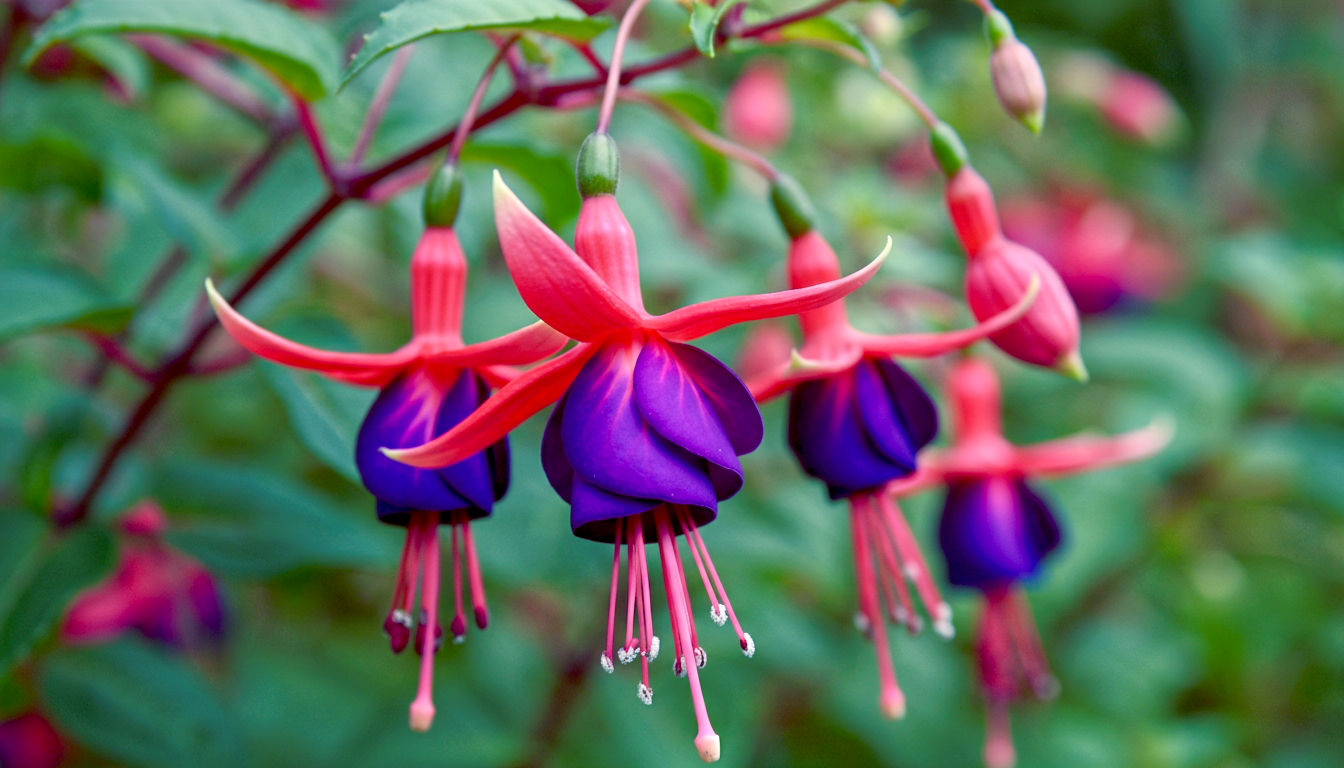
If there’s one flower that feels quintessentially British, it’s the Fuchsia. With their dangling, lantern-like flowers in shades of pink, purple, and white, they’re a cheerful sight in hanging baskets, pots, and garden borders all summer long. They look like tiny, elegant ballerinas dancing in the breeze.
Fuchsias originally came from the mountains of South America, but they took to the British climate like a duck to water. Victorians went mad for them, breeding thousands of new varieties. Today, there are two main types you’ll come across: the hardy fuchsias that can stay in the garden all year round, and the tender ones that need a bit of protection from our cold winters.
Why You’ll Love Fuchsias
- Endless Flowers: They bloom for months on end, from early summer right through to the first frosts of autumn.
- Perfect for Pots: Their trailing habit makes them superstars in hanging baskets and containers, adding a cascade of colour.
- Attracts Wildlife: Bees and other pollinators absolutely love their nectar-rich flowers. You might even spot a hummingbird hawk-moth visiting at dusk.
How to Grow Fuchsias in the UK
Growing fuchsias is easier than you might think. They’re not too fussy, but a few simple tips will keep them looking their best.
Planting and Position
Fuchsias are happiest in a spot that gets some sun but is sheltered from the scorching midday heat. Morning sun and afternoon shade is the perfect combination. They don’t like their roots to get too hot and dry.
- In the ground: If you’re planting a hardy fuchsia in a border, dig a nice deep hole. Pop the plant in so that the base of the stems is about 5cm (2 inches) below the soil surface. This helps protect the plant from frost. Mix in some compost or well-rotted manure to give it a good start.
- In containers: Use a good quality, peat-free compost. Make sure your pot has drainage holes, as fuchsias hate sitting in soggy soil.
Care and Maintenance
- Watering: Keep the soil consistently moist but not waterlogged. In hot summer weather, pots and hanging baskets might need watering every day.
- Feeding: To keep those flowers coming, feed your fuchsias every couple of weeks during the growing season with a liquid tomato feed (like Tomorite), which is high in potash.
- Deadheading: This is the secret to a long flowering season. Gently pinch off the faded flowers, including the little green berry that forms behind them. This tells the plant to produce more blooms instead of putting its energy into making seeds.
- Winter Care: For tender fuchsias in pots, move them into a greenhouse, conservatory, or even a porch before the first frost. Water them very sparingly over winter. For hardy fuchsias in the ground, they should be fine, but adding a thick layer of mulch (like bark chips or compost) around the base will give them extra protection.
Top British Varieties to Try
- ‘Mrs Popple’: A classic hardy fuchsia with striking red and purple flowers. It’s tough as old boots and grows into a lovely, arching shrub.
- ‘Lady Boothby’: A climbing fuchsia! Yes, you can train this one up a trellis or an obelisk. It has long, slender red and purple flowers.
- ‘Swingtime’: A popular choice for hanging baskets, with big, frilly double flowers of white and red.
2. Forsythia (Forsythia × intermedia)

Just when you think winter will never end, Forsythia bursts onto the scene. In early spring, often before its leaves have even appeared, its bare branches are completely smothered in brilliant, sunshine-yellow flowers. It’s like a floral firework display that screams, “Spring is here!”
Forsythia is a super reliable and easy-to-grow shrub. It’s a common sight in suburban gardens and parks across Britain, often used as a hedge or a standalone feature. It’s named after William Forsyth, a Scottish botanist who was a royal head gardener at Kensington Palace in the 18th century.
Why You’ll Love Forsythia
- A Blast of Spring Colour: Nothing beats its cheerful yellow display after a long, grey winter.
- Incredibly Tough: It can handle most soil types, pollution, and a bit of neglect. It’s a real survivor.
- Great for Cut Flowers: A few branches brought indoors will brighten up any room.
How to Grow Forsythia in the UK
Forsythia is one of the easiest shrubs you can grow. It’s perfect for beginners because it’s so forgiving.
Planting and Position
It will grow pretty much anywhere, but for the best flower show, plant it in a spot that gets plenty of sun. It’s not fussy about soil, as long as it isn’t permanently waterlogged.
Give it plenty of space to grow. Some varieties can get quite large and sprawling, so check the label for the final size.
Care and Maintenance
- Watering: Water it well after planting until it’s established. Once it’s settled in, it’s very drought-tolerant and will only need a drink during very long, dry spells.
- Pruning: This is the most important job to keep your Forsythia looking good. If you don’t prune it, it can become a tangled mess of woody stems with fewer flowers. The golden rule is to prune it immediately after it has finished flowering. If you prune it later in the year, you’ll cut off the stems that will carry next year’s flowers.
- Cut back about a quarter of the oldest, thickest stems right down to the base.
- Trim the remaining stems that have flowered back to a healthy, strong bud.
- This encourages fresh new growth, which will produce the best flowers.
Top British Varieties to Try
- ‘Lynwood Gold’: A classic, vigorous variety with masses of large, bright yellow flowers.
- ‘Week End’: A more compact variety, so it’s a good choice for smaller gardens.
- ‘Mêlée d’Or’: A smaller, dwarf variety that forms a neat, rounded mound. Perfect for pots.
3. Foxglove (Digitalis purpurea)
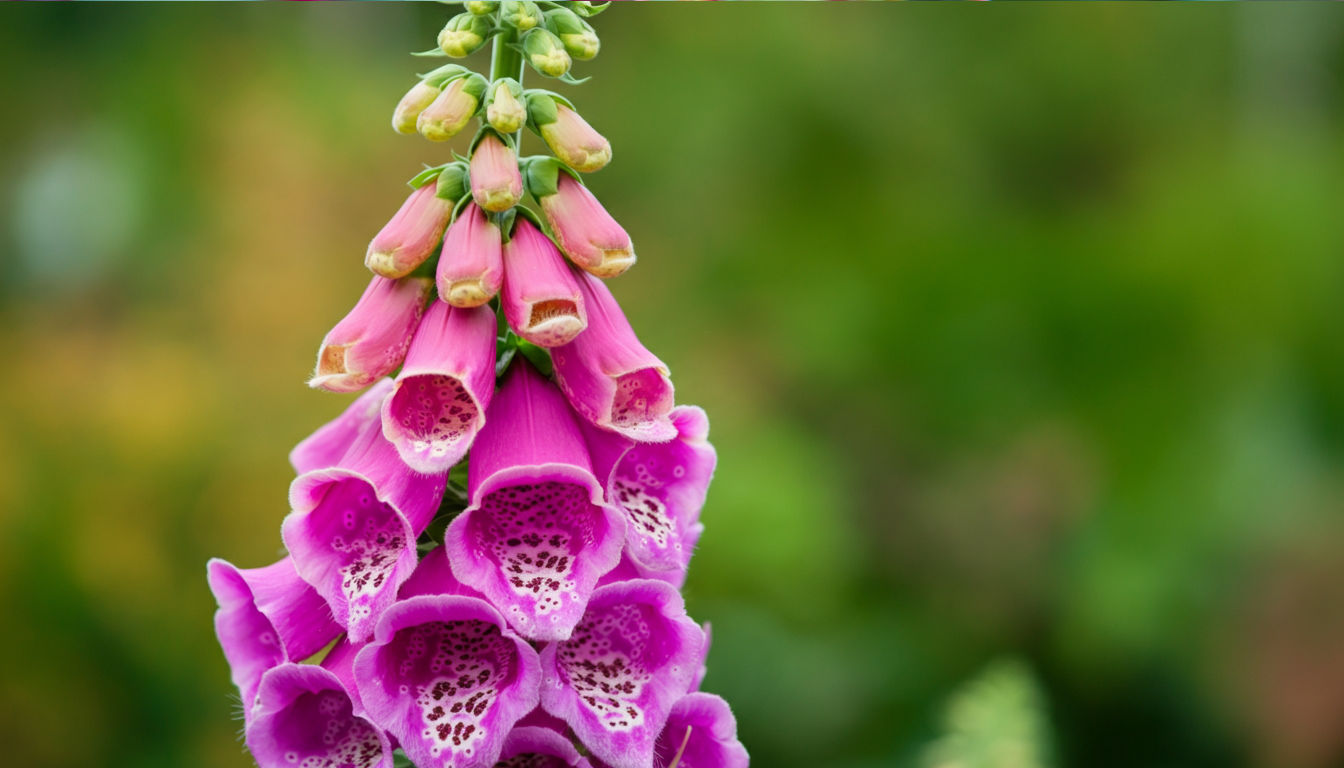
The Foxglove is a magical and iconic British wildflower. Its tall, elegant spires of bell-shaped flowers are a familiar sight in woodlands, country lanes, and cottage gardens in early summer. The flowers, often speckled inside, look like little pixie hats and are irresistible to bees, who tumble inside to get to the nectar.
Foxgloves are biennials. This means they have a two-year life cycle. In the first year, they grow a rosette of large, soft, grey-green leaves close to the ground. In the second year, they send up that spectacular flower spike, set seed, and then die. But don’t worry—they are brilliant at self-seeding, so once you have them, you’ll likely have them forever, with new plants popping up each year.
A quick word of warning: all parts of the foxglove are poisonous if eaten. The plant contains digitalin, a powerful heart stimulant. Just enjoy their beauty in the garden and don’t be tempted to nibble them! It’s perfectly safe to touch them, though.
Why You’ll Love Foxgloves
- Cottage Garden Charm: They bring a wonderful, informal, and romantic feel to any garden.
- Great for Shade: They thrive in the dappled shade under trees, a tricky spot where many other plants struggle.
- A Magnet for Bees: They are one of the best plants for attracting long-tongued bees, like the garden bumblebee.
How to Grow Foxgloves in the UK
Foxgloves are incredibly easy to grow from seed and will happily find their own favourite spots in your garden.
Planting and Position
They love soil that is rich in organic matter, just like the floor of a woodland. They prefer partial shade but will tolerate full sun as long as the soil doesn’t dry out.
You can buy small plants (called plug plants) or grow them from seed. Sow seeds in late spring or early summer in a spare patch of soil or in a seed tray. Once the seedlings are big enough to handle, you can plant them out where you want them to flower the following year.
Care and Maintenance
- Watering: Water young plants regularly. Established plants are quite self-sufficient unless there’s a drought.
- Staking: The flower spikes can get very tall (sometimes up to 2 metres, or over 6 feet!) and can be knocked over by wind or rain. You might need to support them with a bamboo cane or a plant support ring.
- After Flowering: Once the flowers have faded, you have a choice. You can cut the spike down to the base, or you can leave it to stand. If you leave it, the seed pods will ripen and burst, scattering seed for next year’s display.
Top British Varieties to Try
- Common Foxglove (Digitalis purpurea): The classic wild form with purple-pink flowers. ‘Alba’ is a beautiful pure white version.
- ‘Sutton’s Apricot’: A lovely variety with soft, apricot-pink flowers.
- ‘Pam’s Choice’: A very striking foxglove with white flowers that have a dramatic, deep maroon-splashed throat.
4. Fatsia japonica (Japanese Aralia)

If you want to add a touch of lush, jungle-like drama to your garden, look no further than Fatsia japonica. This is a fantastic evergreen shrub with huge, glossy, hand-shaped leaves. It has a real architectural quality that makes it a brilliant focal point, especially in a shady corner where other plants might sulk.
Despite its exotic looks, Fatsia japonica is surprisingly tough and perfectly suited to the UK climate. It’s also known as the Castor Oil Plant, though it’s not the plant that real castor oil comes from. In autumn, it produces strange, globe-like clusters of creamy-white flowers, which are followed by small black berries.
Why You’ll Love Fatsia japonica
- Bold, Tropical Vibe: The giant leaves create an instant impact and a lush, exotic feel.
- Thrives in Shade: It’s a superstar for those tricky, shady spots in the garden, even against a north-facing wall.
- Evergreen Structure: It provides interest all year round, looking just as good in the depths of winter as it does in summer.
How to Grow Fatsia japonica in the UK
This is another wonderfully low-maintenance plant that gives you a lot of bang for your buck.
Planting and Position
Fatsia japonica’s ideal spot is in sheltered, partial or full shade. It hates being exposed to strong, cold winds, which can damage its large leaves. It will grow in most soils but prefers moist, well-drained conditions.
When planting, dig in plenty of compost to enrich the soil. It can also be grown in a large pot on a patio, which is a great way to liven up a shady courtyard.
Care and Maintenance
- Watering: Water regularly after planting. Once established, it’s fairly drought-tolerant but will appreciate a good soak during hot, dry spells. Potted plants will need more frequent watering.
- Feeding: Feed it in spring with a general-purpose fertiliser like Growmore or fish, blood, and bone to encourage lots of big, healthy leaves.
- Pruning: It doesn’t need much pruning. You can simply remove any dead or damaged leaves in spring. If it gets too big or leggy, you can cut the stems back hard in spring, and it will re-sprout from the base.
Top British Varieties to Try
- Fatsia japonica (the original): The classic green-leaved version is hard to beat for its simple, bold elegance.
- ‘Spider’s Web’: A really beautiful variety with leaves that are variegated with a delicate, creamy-white speckling, like a spider’s web.
- ‘Variegata’: This one has leaves with bold, creamy-white edges, which helps to brighten up a dark corner.
5. Fennel (Foeniculum vulgare)
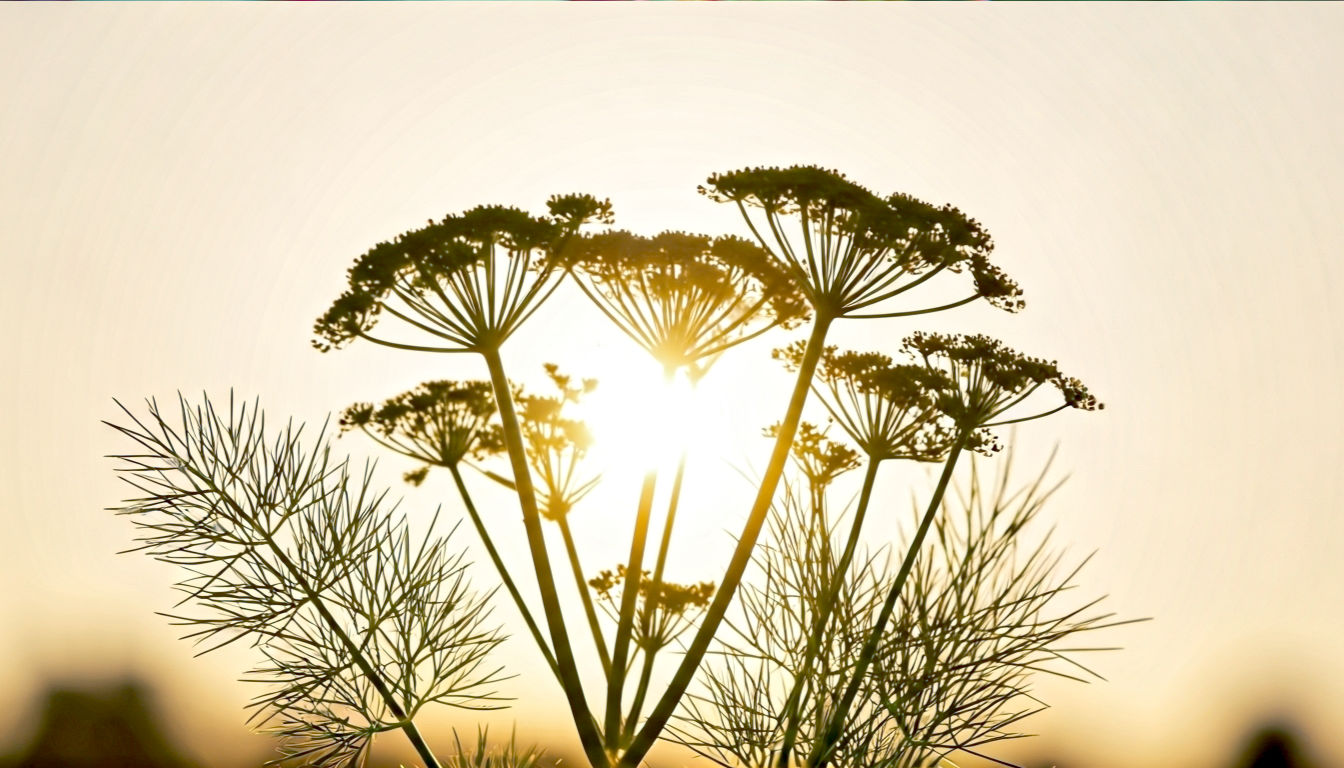
Fennel is a wonderfully versatile plant that’s both beautiful and useful. It’s a herb that looks fantastic in a flower border and tastes great in the kitchen. There are two main types: herb fennel, grown for its feathery leaves and seeds, and Florence fennel, which is grown for its swollen, bulb-like base. Here, we’ll focus on herb fennel.
It has tall stems clothed in delicate, feathery, aniseed-scented leaves. In late summer, it’s topped with large, flat-topped heads of tiny yellow flowers, which are a paradise for hoverflies and other beneficial insects. It brings a soft, hazy, and airy feel to the garden.
Why You’ll Love Fennel
- Dual Purpose: It’s a feast for the eyes and the kitchen. The leaves are delicious with fish, and the seeds can be used in baking or to make tea.
- Attracts Good Insects: The flowers are a magnet for hoverflies, ladybirds, and lacewings, whose larvae will happily munch on any aphids in your garden.
- Drought Tolerant: Once it’s established, it’s very tough and can cope with dry conditions.
How to Grow Fennel in the UK
Fennel is easy to grow from seed and will often self-seed around the garden, but not in an aggressive way.
Planting and Position
It needs a sunny, sheltered spot and well-drained soil. It has a long taproot, a bit like a carrot, which means it doesn’t like being moved, so choose its final position carefully. Don’t plant it right next to dill, as they can cross-pollinate, resulting in strange-tasting seeds.
Sow seeds directly into the soil in spring where you want them to grow.
Care and Maintenance
- Watering: Water young plants to help them get established. Mature plants are very drought-resistant.
- Support: The tall flower stems can sometimes flop over, especially in windy gardens. You may need to provide some gentle support with twigs or a plant support ring.
- Harvesting: You can snip the feathery leaves as and when you need them. To collect the seeds, wait for the flower heads to turn brown, then cut them and hang them upside down in a paper bag to dry.
Top British Varieties to Try
- Common Fennel (Foeniculum vulgare): The standard green-leaved variety is lovely and very reliable.
- Bronze Fennel (Foeniculum vulgare ‘Purpureum’): This is a stunning ornamental version with beautiful, smoky, bronze-purple leaves. It looks incredible in a sunny border, especially when the light shines through it.
6. Ferns (Various)
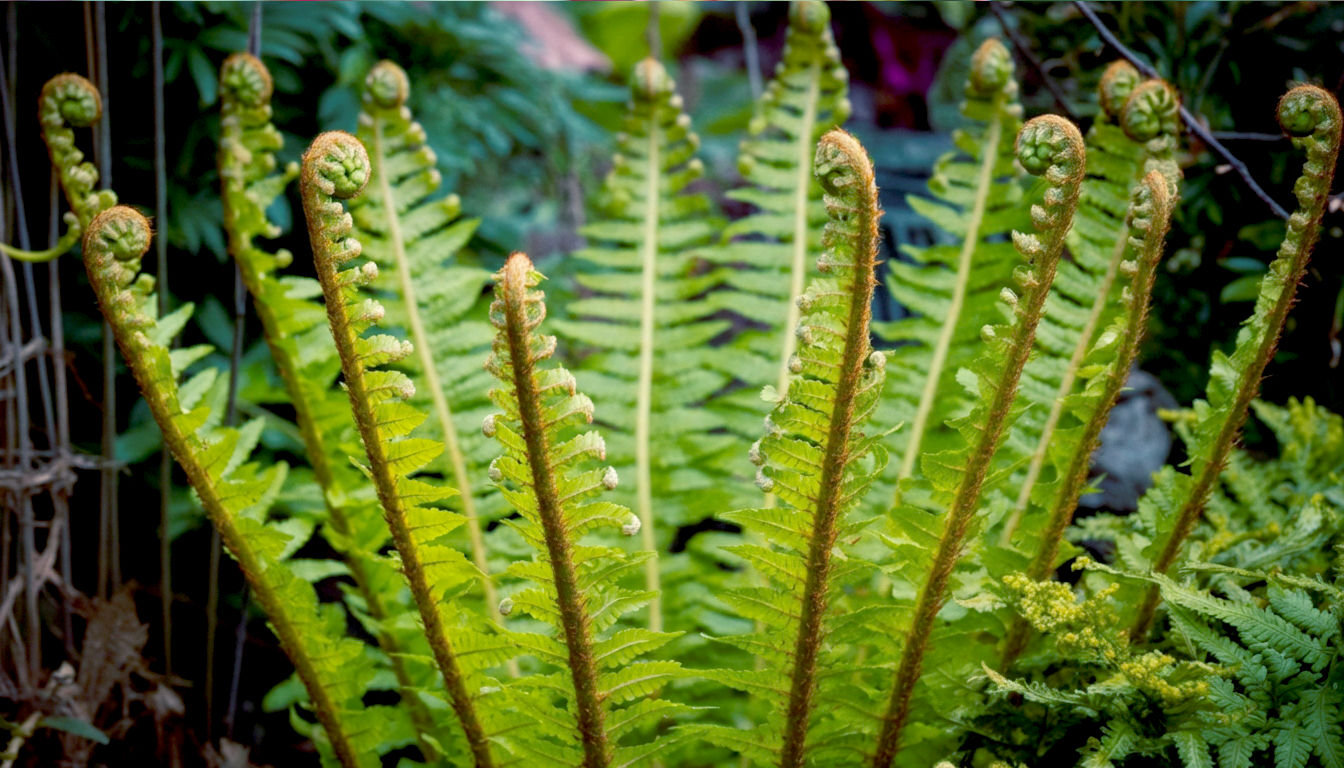
Step into a shady, damp woodland in Britain, and you’ll be surrounded by the delicate beauty of Ferns. With their intricate, feathery fronds, they are among the oldest groups of plants on Earth. They bring a sense of calm, cool tranquillity to the garden and are perfect for those difficult, shady spots where little else will grow.
There is a huge variety of ferns that are perfectly hardy in the UK, from the tall and stately shuttlecock fern to the tiny, delicate maidenhair fern. They are evergreen or deciduous (losing their leaves in winter), and come in a surprising range of greens, and even coppery or silvery shades.
Why You’ll Love Ferns
- The Ultimate Shade Lovers: They are the number one choice for bringing life and texture to the darkest corners of the garden.
- Low Maintenance: Once they are established in the right spot, they are incredibly self-sufficient.
- Year-Round Interest: Evergreen ferns like the Hart’s Tongue Fern provide valuable structure and greenery throughout the winter.
How to Grow Ferns in the UK
The key to happy ferns is to mimic their natural woodland habitat.
Planting and Position
Most ferns need shade and moist, but not waterlogged, soil. A spot under trees, against a north-facing wall, or in a damp border is ideal.
Before planting, improve the soil by digging in lots of leaf mould or garden compost. This helps to retain moisture and provides the nutrients they love. When planting, make sure the crown of the fern (where the fronds emerge) is level with the soil surface.
Care and Maintenance
- Watering: This is crucial, especially in the first year. Keep the soil consistently moist. In dry spells, give them a good, deep watering.
- Mulching: Apply a generous mulch of leaf mould or compost around the plants each autumn. This feeds the soil and helps to lock in moisture.
- Tidying Up: For deciduous ferns, you can cut back the old, brown fronds in late winter or early spring, just before the new fronds start to unfurl. For evergreen ferns, just snip off any scruffy-looking fronds in spring.
Top British Ferns to Try
- Shuttlecock Fern (Matteuccia struthiopteris): A beautiful deciduous fern that sends up its fronds in a perfect shuttlecock shape in spring.
- Hart’s Tongue Fern (Asplenium scolopendrium): An unusual evergreen fern with long, strappy, undivided leaves that look like bright green ribbons.
- Soft Shield Fern (Polystichum setiferum): A lovely, soft-textured evergreen fern that forms a graceful, spreading clump.
7. Fig (Ficus carica)
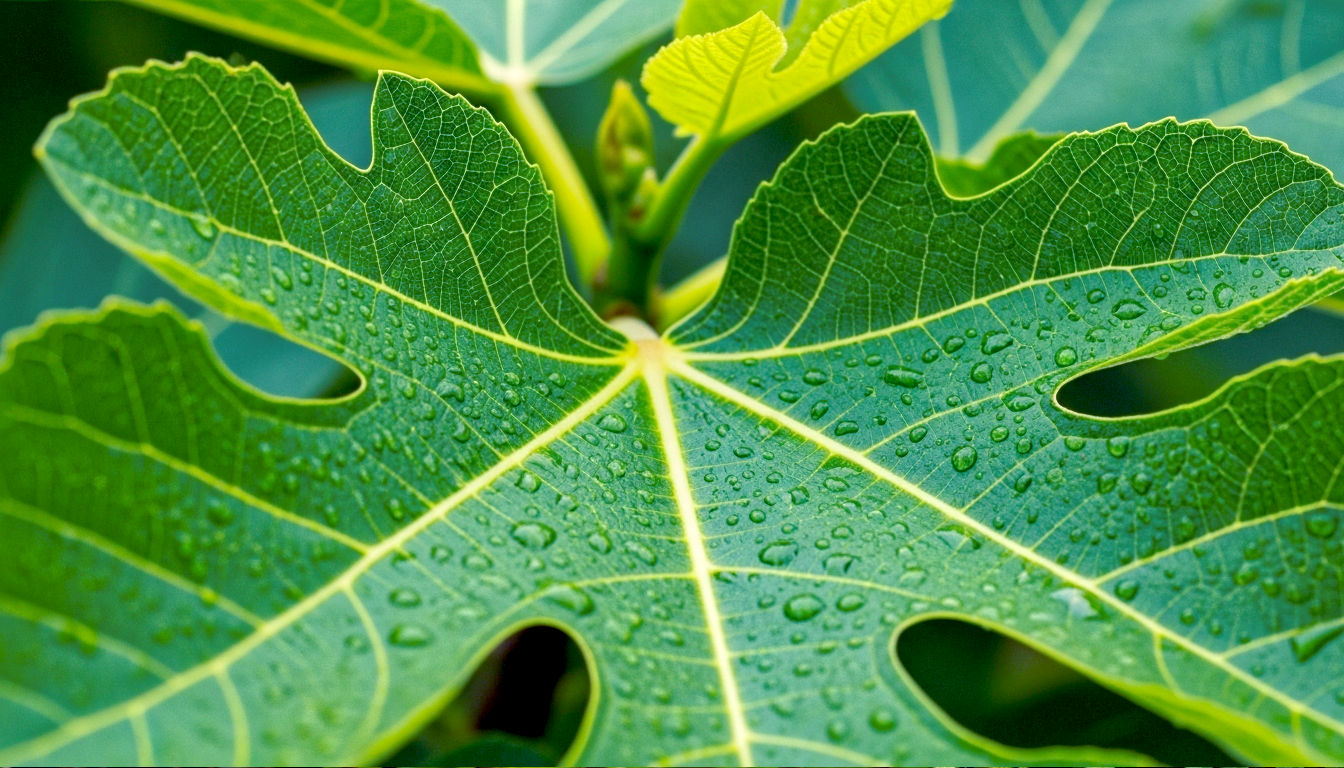
Growing your own figs in Britain might sound like something reserved for stately homes with massive walled gardens, but it’s surprisingly achievable. A Fig tree, with its large, lobed leaves and delicious, sweet fruit, can be a fantastic and productive feature in many UK gardens.
The secret to getting figs to ripen in our cooler climate is to restrict their root growth. This stops the tree from putting all its energy into making leaves and encourages it to produce fruit instead. The best way to do this is to grow it in a large pot or to plant it in a ‘fig pit’—a hole in the ground lined with paving slabs. Growing it against a warm, sunny wall also helps ripen the fruit.
Why You’ll Love Figs
- Delicious Home-Grown Fruit: There’s nothing quite like the taste of a fresh, sun-warmed fig picked straight from your own tree.
- Architectural Leaves: The large, handsome leaves provide a wonderful, Mediterranean feel.
- Surprisingly Hardy: The right varieties are tough enough to survive most British winters.
How to Grow Figs in the UK
A little bit of preparation when planting will pay dividends for years to come.
Planting and Position
Figs need sun, sun, and more sun. The warmest, most sheltered spot in your garden is essential. A south-facing or west-facing wall is perfect, as the brickwork will soak up heat during the day and release it at night.
- In a pot: Choose a pot that is about 45cm (18 inches) in diameter. Use a soil-based compost like John Innes No. 3.
- In the ground: Dig a hole about 60cm (2 feet) square and deep. Line the sides with broken paving slabs to create a box that will stop the roots from spreading out too far. Backfill with soil mixed with compost.
Care and Maintenance
- Watering: Figs, especially in pots, get very thirsty in summer. Water them generously, never letting the compost dry out completely.
- Feeding: Feed potted figs every two weeks in summer with a high-potash liquid feed (like tomato feed).
- Protecting Fruit: In late autumn, you will see tiny, pea-sized embryo figs on the stems. These are the fruits that will ripen the following summer. Protect them from severe frosts by covering the tree with fleece or bubble wrap. Any larger figs left on the tree in autumn will not survive the winter, so remove them.
- Pruning: In spring, remove any stems that have been damaged by frost. In early summer, pinch out the growing tip of each new shoot, leaving about five leaves. This encourages the plant to put its energy into fruiting.
Top British Variety to Try
- ‘Brown Turkey’: This is by far the most reliable and popular variety for the UK climate. It produces a good crop of large, sweet, brownish-purple figs with red flesh. It’s hardy and a great choice for beginners.
8. Forget-Me-Not (Myosotis sylvatica)
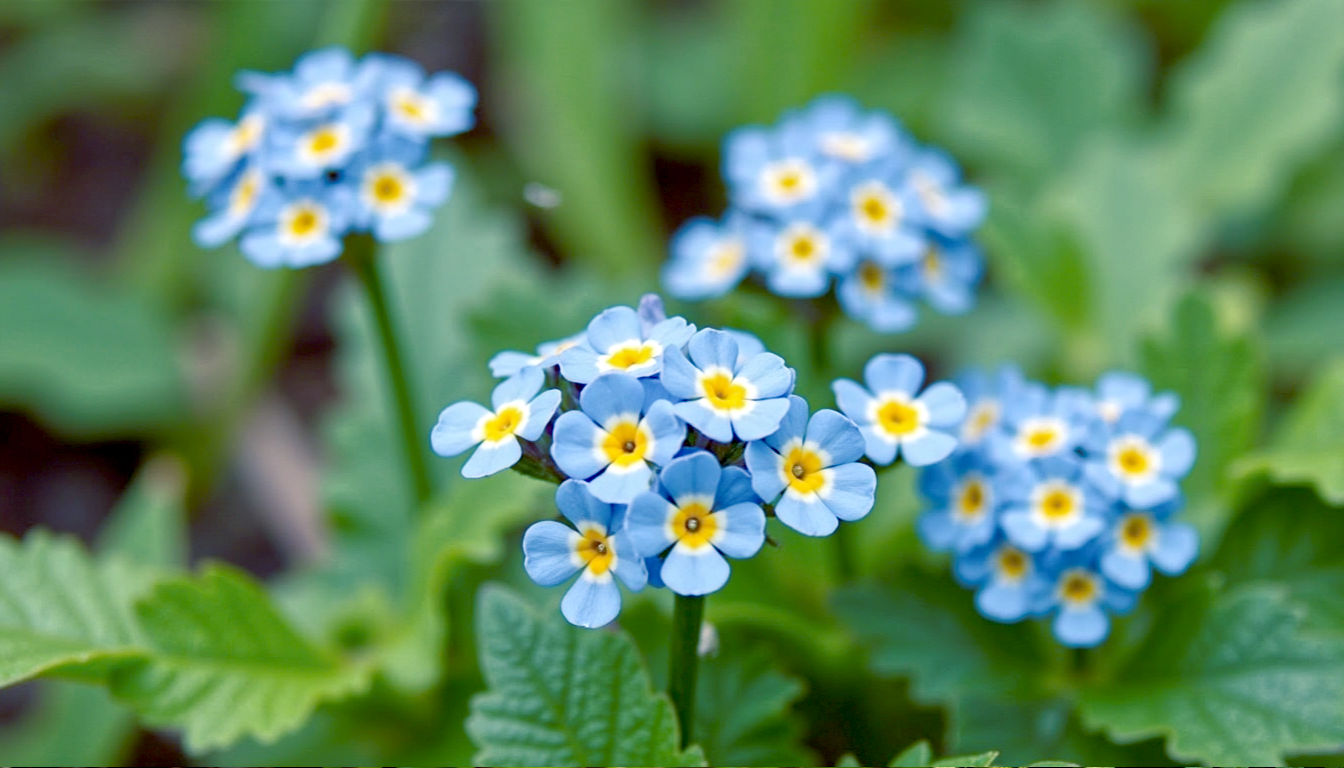
The Forget-Me-Not is a humble but utterly charming spring flower. Its sprays of tiny, delicate, sky-blue flowers with their little yellow eyes are a classic sight in British gardens. They are perfect for bridging the gap between the last of the daffodils and the first of the summer bedding plants.
Like foxgloves, forget-me-nots are biennials or short-lived perennials that are brilliant at self-seeding. They will pop up in the most delightful places—in cracks in paving, at the front of borders, and under shrubs. They create a beautiful, hazy carpet of blue beneath tulips and wallflowers.
Their name comes from a German legend about a knight who drowned while picking these flowers for his love, his last words being “Vergiss mein nicht.”
Why You’ll Love Forget-Me-Nots
- Effortless Charm: They bring a soft, romantic, cottage-garden feel with almost no effort.
- Perfect Partners: They are a classic companion for spring bulbs, especially tulips, creating stunning colour combinations.
- Great for Pollinators: They are an important early source of nectar for bees and hoverflies.
How to Grow Forget-Me-Nots in the UK
These are some of the easiest plants to grow. The main challenge is not having too many!
Planting and Position
They will grow almost anywhere, in sun or partial shade, and in any reasonable soil. They are particularly happy in moist soil.
You can buy trays of forget-me-not plants in autumn or spring from garden centres. Or, you can easily grow them from seed. Sow seeds in early summer in a spare patch of ground, and then move the young plants to their final positions in autumn.
Care and Maintenance
- Watering: Water them in if the weather is very dry, but they are generally very self-reliant.
- After Flowering: Once they start to look straggly and the flowers have faded, simply pull them up. But make sure you give them a good shake first to scatter their seeds for next year’s display. That’s all there is to it!
Top British Varieties to Try
- Myosotis sylvatica: The common woodland forget-me-not is perfect. You can also find varieties with pink or white flowers if you fancy a change from the classic blue.
9. Flowering Currant (Ribes sanguineum)
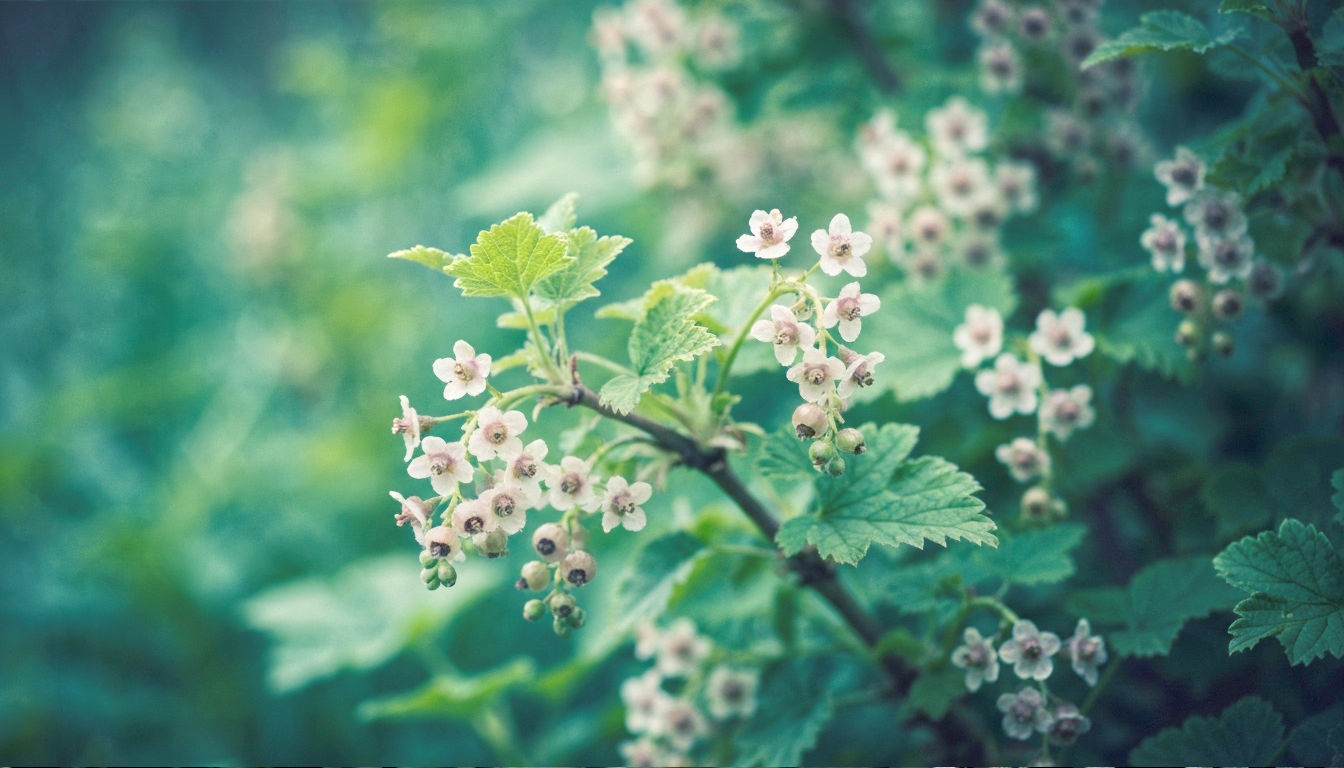
Another fantastic herald of spring, the Flowering Currant is a tough, deciduous shrub that is covered in pendulous clusters of flowers in March and April. The flowers are usually a vibrant pink or red and appear just as the new leaves are starting to unfurl.
It’s an old-fashioned favourite, and for good reason. It’s incredibly hardy, easy to grow, and provides a much-needed splash of colour early in the year. The whole plant has a distinctive, pungent scent, which you’ll either love or hate! When the leaves are crushed, they smell strongly of blackcurrants. The flowers also provide a vital early food source for emerging queen bumblebees.
Why You’ll Love Flowering Currant
- Early Spring Flowers: Its vibrant display is a welcome sight after winter.
- Pollinator-Friendly: A lifeline for early-emerging bees.
- Extremely Hardy: It will grow happily in most parts of the UK and in most soils.
How to Grow Flowering Currant in the UK
This is a great, low-maintenance shrub for any garden.
Planting and Position
It will grow in full sun or partial shade and is not fussy about soil type, as long as it’s not completely waterlogged. It’s perfect for the back of a mixed border or as part of an informal hedge.
Care and Maintenance
- Watering: Water well after planting, but once established it is very drought-tolerant.
- Pruning: Just like Forsythia, it’s best to prune it straight after it has finished flowering. This gives it plenty of time to produce the new growth that will carry next year’s flowers. Cut back about one-third of the oldest stems to the base to keep the plant vigorous and prevent it from becoming a tangled mess.
Top British Varieties to Try
- ‘King Edward VII’: A classic and very popular variety with deep, crimson-red flowers. It has a more compact and upright growth habit than some others.
- ‘Pulborough Scarlet’: Another excellent variety with rich, dark red flowers.
- ‘White Icicle’: If you don’t like pink, this is a beautiful and elegant variety with pure white flower clusters.
10. Fir Tree (Abies)

When we think of Fir Trees, we often think of Christmas trees. The Nordmann Fir (Abies nordmanniana) is the classic non-drop Christmas tree we bring into our homes. But firs are also magnificent evergreen, coniferous trees that can be a stunning feature in a larger garden, providing height, structure, and year-round colour.
True firs belong to the genus Abies. They are distinguished from other conifers like pines and spruces by their needles, which are soft and flat, and their cones, which grow upright on the branches like candles and disintegrate while still on the tree, rather than falling to the ground whole.
While some firs can grow into enormous forest giants, there are many smaller or slow-growing varieties that are perfectly suitable for British gardens.
Why You’ll Love Fir Trees
- Evergreen Structure: They provide a strong, architectural backbone to the garden, especially in winter when other trees are bare.
- Beautiful Foliage: The needles come in shades of green, blue, and silver, and are often very aromatic.
- Wildlife Haven: They provide excellent shelter for birds and other wildlife, especially in cold weather.
How to Grow Fir Trees in the UK
Choosing the right fir for your space is the most important step.
Planting and Position
Most firs prefer a sunny or lightly shaded spot with well-drained, slightly acidic soil. They do not like to have their roots sitting in waterlogged ground.
Before you buy, check the final height and spread on the label! A dwarf variety might be perfect for a rockery, while a larger species will need plenty of room to grow. Dig a wide planting hole and add some compost to the soil. Make sure the top of the rootball is level with the surrounding soil.
Care and Maintenance
- Watering: Water young trees regularly, especially during dry spells, for the first couple of years until they are well established.
- Mulching: An annual mulch of bark chips will help to keep the soil moist and suppress weeds.
- Pruning: Firs naturally grow in a neat, conical shape and generally need no pruning at all. You should only ever need to remove a dead or damaged branch.
Top Firs for British Gardens
- Korean Fir (Abies koreana): A superb choice for smaller gardens. It’s slow-growing and produces beautiful, small, bluish-purple cones even on very young trees.
- Balsam Fir (Abies balsamea ‘Nana’): A dwarf, dome-shaped variety that is perfect for rock gardens or containers. It only grows to about 50cm (20 inches) tall.
- Noble Fir (Abies procera ‘Glauca’): A larger fir, but one of the most beautiful, with stunning, silvery-blue needles. One for a garden with more space to play with.
Conclusion: A Fabulous ‘F’ for Your Garden
And there you have it—ten fantastic plants, all starting with the letter ‘F’, that can bring colour, structure, and life to any British garden. From the cheerful, dancing flowers of the Fuchsia to the stately, evergreen presence of a Fir tree, there’s a plant here to suit every taste and every space.
Gardening in the UK is all about embracing the seasons, and these plants are perfect partners in that journey. Forsythia and Flowering Currant wake us up from winter with a jolt of brilliant colour. Foxgloves and Forget-Me-Nots bring the wild charm of the countryside right to our doorsteps in spring and early summer. And the bold leaves of Fatsia and the delicious promise of a home-grown Fig remind us that our gardens can be lush, productive, and even a little bit exotic.
The best gardens are full of plants that we love to look at and care for. So next time you’re at the garden centre, perhaps you’ll look for one of these fabulous ‘F’s. Happy gardening!
Further Reading
For more expert advice and inspiration, these resources are invaluable for any British gardener:
- Royal Horticultural Society (RHS): The ultimate source of gardening knowledge. www.rhs.org.uk
- BBC Gardeners’ World: Packed with practical tips, videos, and articles from the trusted TV team. www.gardenersworld.com
- The Woodland Trust: The best resource for information on native British trees and wildflowers. www.woodlandtrust.org.uk




